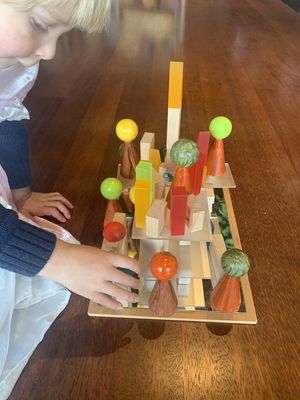When we think of maths, most of us go back to our memories of adding and subtracting, memorising number bonds, multiplications, divisions, and fractions, and some of us start to shiver a little. But that’s not what maths looks like in early years education. So, what is it?
Maths is everywhere. Once you start to consciously notice interactions with children involving some sort of mathematical knowledge, you will be astounded by how it is around you ALL THE TIME!
As educators, we communicate and encourage the use of numerical values when we count how many children are going outside, handle three-dimensional shapes and count resources as we add them together. We make sure everyone has equal amounts at mealtime and count as we button a child’s shirt or walk them down the steps.
While maths is all around us, one of the most commonly requested training from early years educators that I hear is “Maths, please!” Why do so many of us desire more confidence in teaching maths? It could help to remember that a lot of the skills we need to teach our children, we do automatically and subconsciously. That’s why it’s essential to know how to adapt our learning environments and incorporate age-appropriate mathematical concepts into play.
Here’s an insight into the principles that will help you teach mathematical concepts confidently and effectively in your early years environment.
Counting
Counting is not simply the ability to count to five. Dr Julian Grenier, who led the 2020 revision of Development Matters (the non-statutory guidance for the Early Years Foundation Stage in England) encourages educators to think carefully when planning the next steps for children. Once a child can count to five, explore the fiveness of five before immediately moving on to teaching to count to ten. Find out if the child recognises the numeral or different ways of displaying five, such as using fingers, dice, or a domino pattern. Can the child count five objects as well as complete the actions?

Counting has more than just one principle, so we must allow children to explore numbers meaningfully. This experience explores weight through outdoor play.
Cardinality
Cardinality is knowing how many. There are two ways to find this out - counting and subitising. Both skills are learnt through practice. Children need opportunities to count objects, actions, or even abstract concepts. Subitising is knowing how many without counting. The ability to subitise is developed through frequent exposure to counting and sorting activities, pattern making, and various representations of numerals and amounts—for example, rolling dice, playing cards, or dominoes.
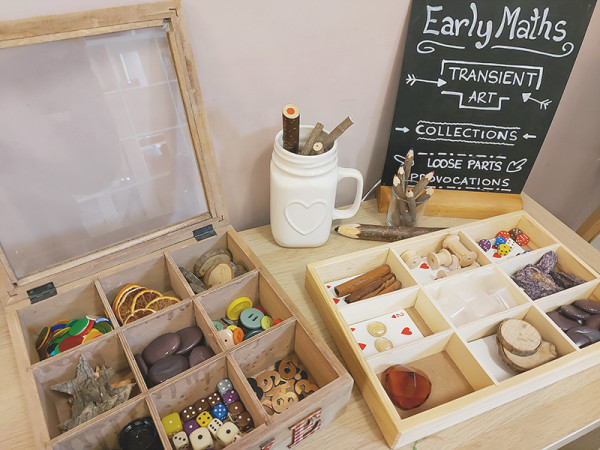
Through transient art and loose part play, children practice counting principles - counting in order (stable order principle), using objects to point and count (one-to-one principle), and understanding the last number represents the number of items (cardinal principle).
Measurement
Measurement is about attributes, comparison, and conservation. You can compare items based on their characteristics - length, shape, size, colour, texture, weight, etc. The educator has the critical role of introducing children to descriptive words that promote knowledge of measurement - long, short, small, large, heavy, light, etc. Conservation is knowing that the amount stays the same, even if the appearance changes. I am sure that you have all witnessed a distraught child who cannot understand that one whole biscuit is the same as one biscuit broken into many small pieces.
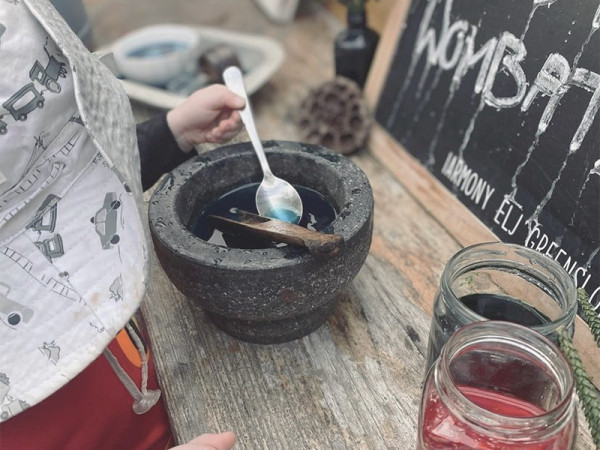
Creative potions and creations are an easy way to engage children of various age groups to explore mathematical concepts of volume. As they transfer materials from one vessel to another, they learn about conservation.
We can measure many attributes, and there are two ways we can do this.

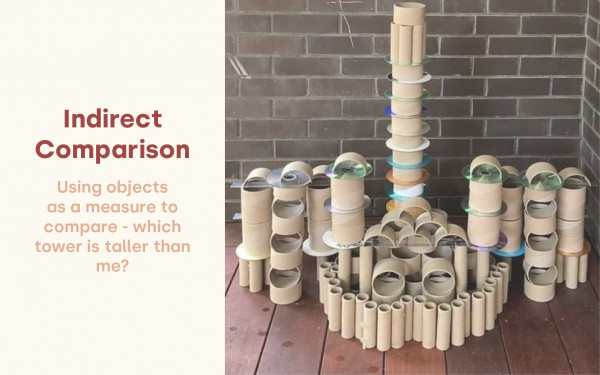
Spatial awareness
Spatial awareness is an aspect of maths that is not as obvious as others but plays a crucial role in children’s mathematical development. From a very young age, children like to climb on top of things or crawl into small spaces to experience things from different points of view and learn how to coordinate their bodies. At the same time, they are learning to understand physical properties such as size, shape, and volume, which will help them visualise and manipulate objects.
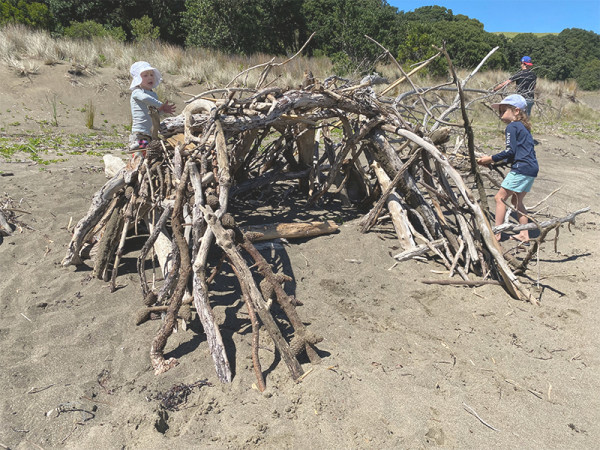
Den making shares an exploration of problem-solving, creative thinking, and mathematical concepts of spatial awareness.
Shapes
Shapes have independent properties that can be explored and discussed with children. We can talk about a square with four straight edges, a triangle having three, or a circle with one continuous external line. Block play is a perfect opportunity for learning the concept of shape, enabling children to recognise irregular shapes as well as more common shapes.
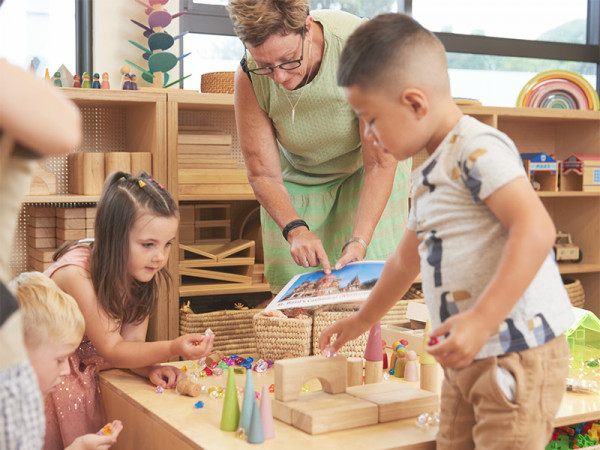
Above, the children explore shapes in our environment using reference imagery to inspire creations and spark the imagination. A range of loose parts and building props allows children to analyse shapes and patterns to recreate and imagine new possibilities, testing the boundaries of stability and balance.
Pattern
Pattern making and noticing patterns identifies that objects have different attributes and features. Offering an array of loose parts and transient art inspires children to create their own patterns and allows you to talk to children about what they see. Ask why they chose a particular object or discuss the design made and find out what attributes and features they already recognise and which ones you can introduce to them.
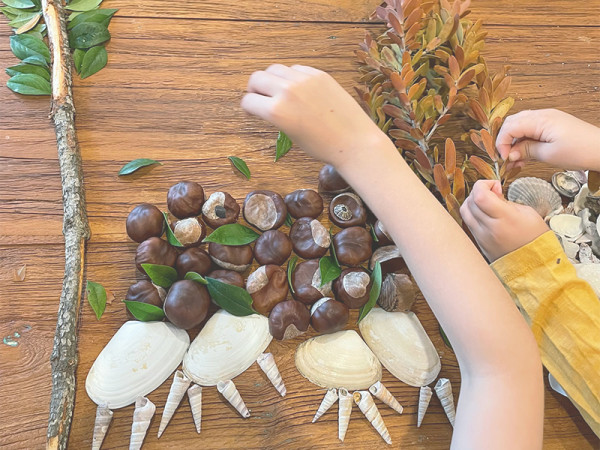
Examples of transient art using loose parts from nature. Transient art opportunities encourage children to explore all aspects of mathematical learning.
Translating theory into practice - what does learning mathematical concepts through play look like?
Counting and cardinality
Number names and counting opportunities can be incorporated in all areas of care and play. For example - during building and constructing, in dramatic play areas playing shops or cooking for friends, moving up and down stairs or jumping between stepping stones, assessing the number of colours to use for a painting or strokes to make on the paper, or the number of beads that can fit on a string, etc.
Representing numbers and number lines within play – fingers, dice, dominoes, cash registers and calculators all house numbers and encourage children to practice counting.
Using props with number rhymes, stories, and songs allows children to connect visual cues with the words. For example, the number of monkeys jumping on the bed decreases as they fall off.
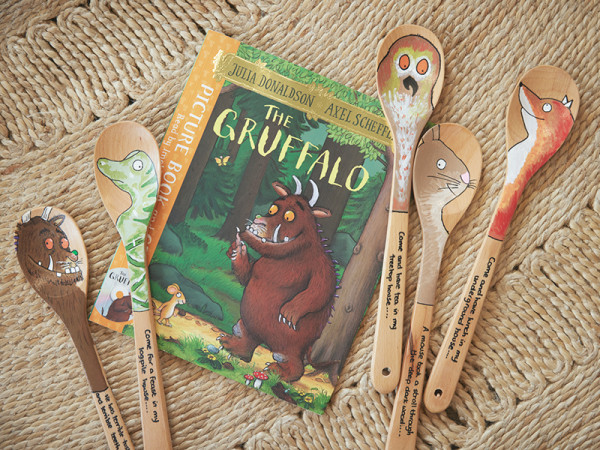
Stories, songs, and rhymes are great for introducing mathematical concepts. Well-known stories such as Rosie’s Walk or We’re Going on a Bear Hunt teach children prepositions. Number songs used with props such as Wooden Spoon Story Props for stories like The Gruffalo or Five Little Monkeys Jumping on the Bed allow children to see the number of props increasing or decreasing. Maths doesn’t require special resources. You probably already have everything you might need, such as a collection of things with different attributes and features.
Measurement through space, shape, and pattern
- Block and constructive play - stacking objects until they’re no longer stable, balancing them between two points, and forming shapes and patterns. On a larger scale, den or hut building incorporates the whole body.
- Dramatic play - role-playing activities that happen in our everyday lives such as shopping, cooking, and doctors using real-life objects like measuring scales, jugs and spoons.
- Expressive arts - three-dimensional manipulative objects like transient art, clay and play dough. Verbal expressions of poem, rhyme and rhythmic pattern.
- Discovery - substances that promote spatial development include water, sand, playdough, etc. When accompanied by various sized and shaped vessels (jars, jugs, lids, bottles, spoons, pots and pans, etc.), there are endless opportunities to explore measurement.
- Care routines include measuring size, height and weight changes, baking and making play-dough.
- Outdoor play - obstacle courses, routes, and journeys all encourage spatial awareness of objects within space and our bodies within space.
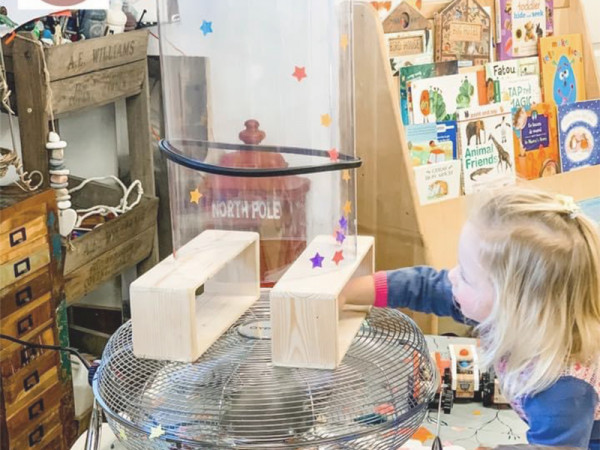
Experimenting with the wind using a finger-safe fan is an opportunity to explore weight and measurement, using a variety of objects to see which will take flight and how far they will go.
It doesn’t need to be complicated! To incorporate more mathematical concepts into your practice using the knowledge and resources you have already, see our Mathematics Enspire’s for endless inspiration.
![]()
References
Working with the revised Early Years Foundation Stage – Principles into Practice, Dr Julian Grenier
 Lenka Melova
Lenka Melova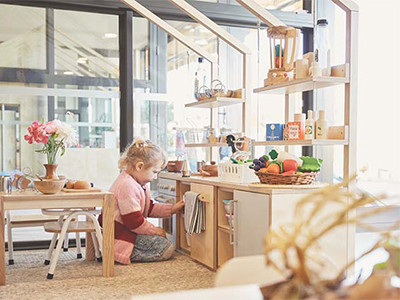
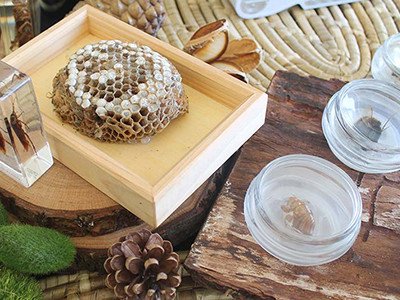
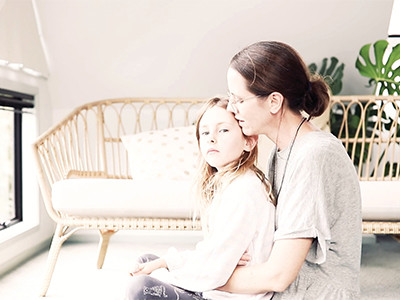
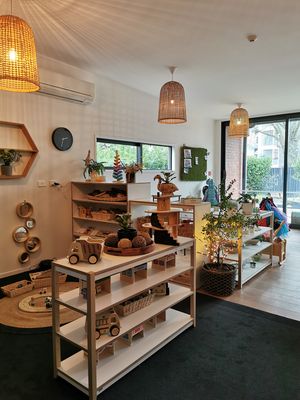
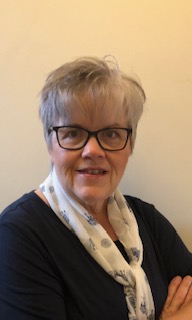 Angela Foley
Angela Foley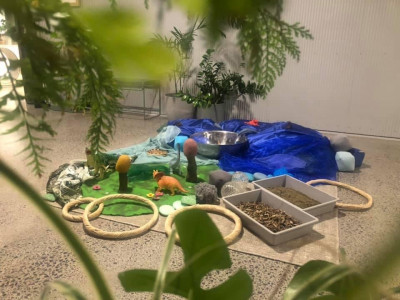
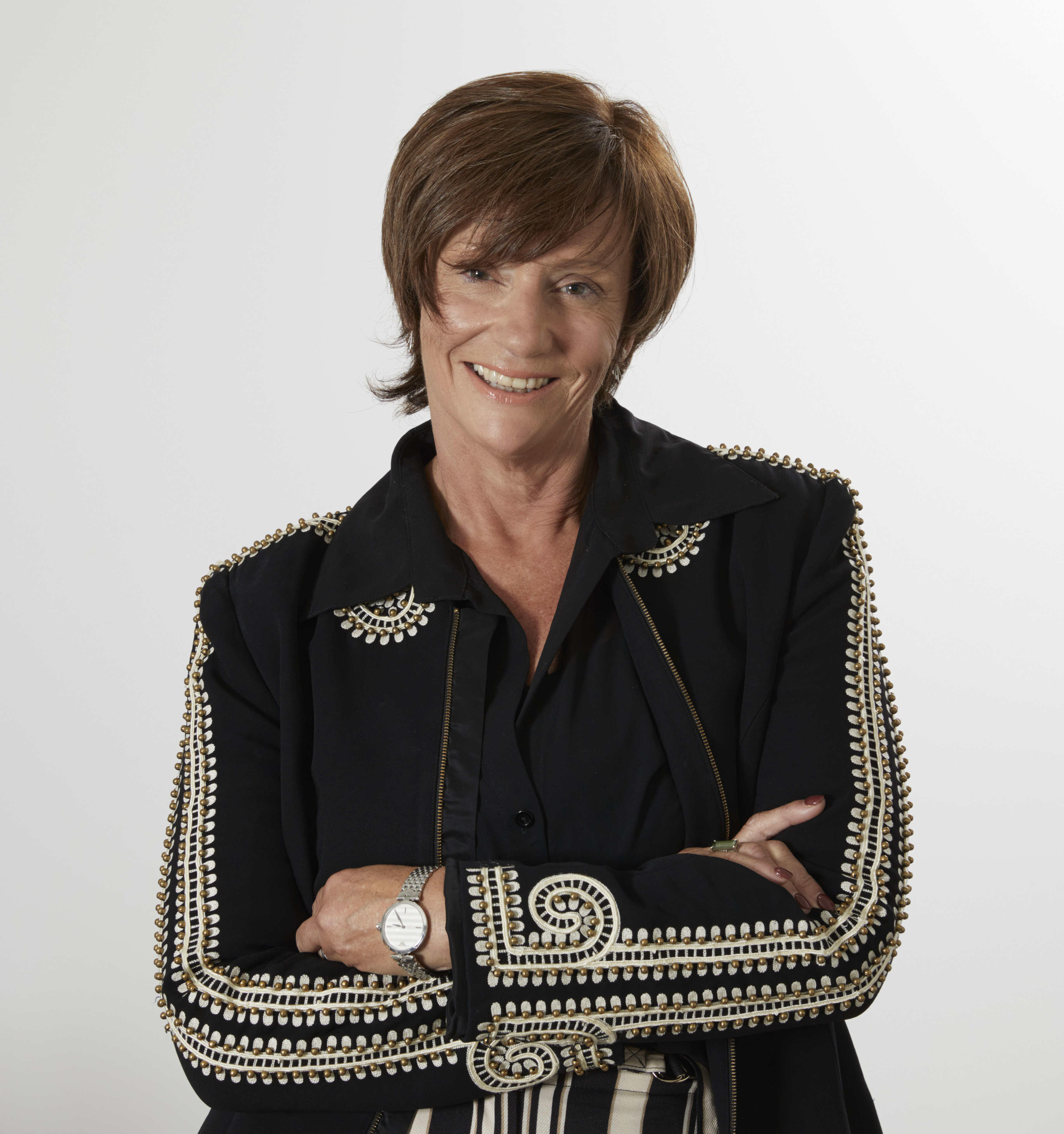 Michelle Pratt
Michelle Pratt